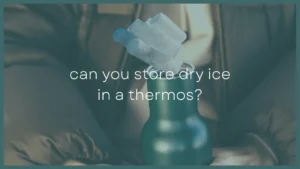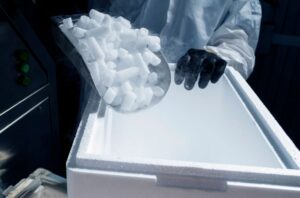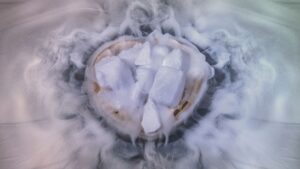Dry ice is great for keeping food frozen in your cooler or freezer and it's commonly used for fog effects during stage shows or on halloween. But how exactly is dry ice made and is it possible to make it yourself?
Dry ice is made by extracting carbon dioxide gas from factories and pressurizing it to form liquid CO2. This liquid CO2 is then depressurized in tanks which causes the temperature to drop and dry ice snow to form. This dry ice snow is compressed to make dry ice blocks and pellets.
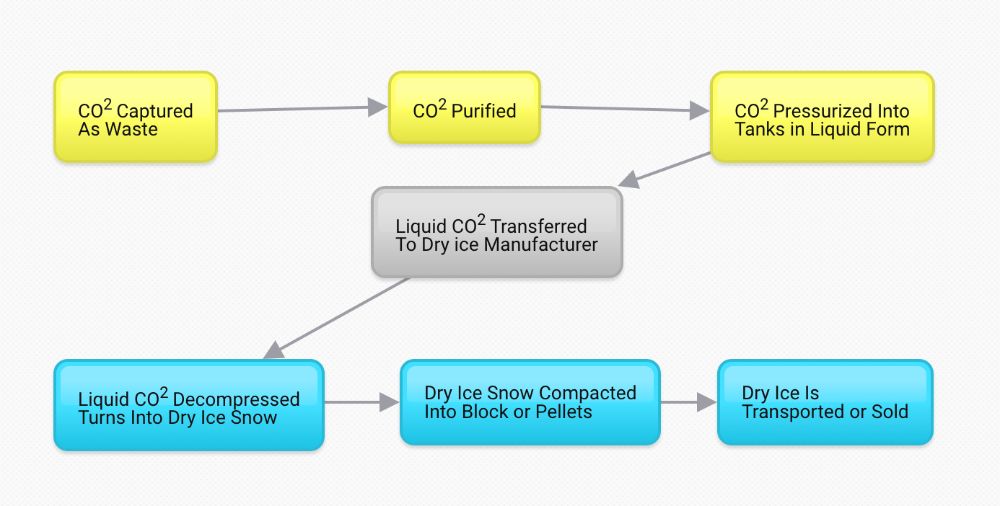
Dry ice is much too cold to be made at home in your freezer. At -109.2ºF (-78.5ºC) there are no domestic freezers that are able to create or store dry ice and keep it from turning into a gas.
So dry ice is made and then stored in heavily insulated coolers to slow the rate of sublimation so the dry ice lasts longer.
While you can make dry ice at home with a fire hydrant it's extremely expensive and you won't get much dry ice. This is why it's almost always better to purchase commercially made dry ice.
What Exactly Is Dry Ice?
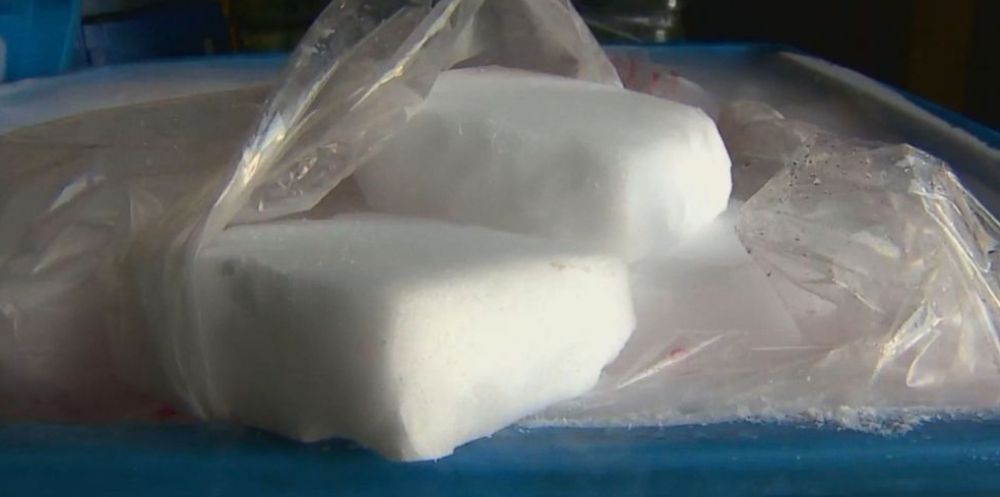
To understand how dry ice is made first it's helpful to understand exactly what dry ice is and lucky for us it's a pretty easy thing to understand.
Dry ice is pure carbon dioxide in its frozen solid state. There is nothing in dry ice other than carbon dioxide.
So how exactly does carbon dioxide get turned from a gas into the frozen blocks we know and love?
1. CO2 Gas Is Extracted As a Waste Material From Factories
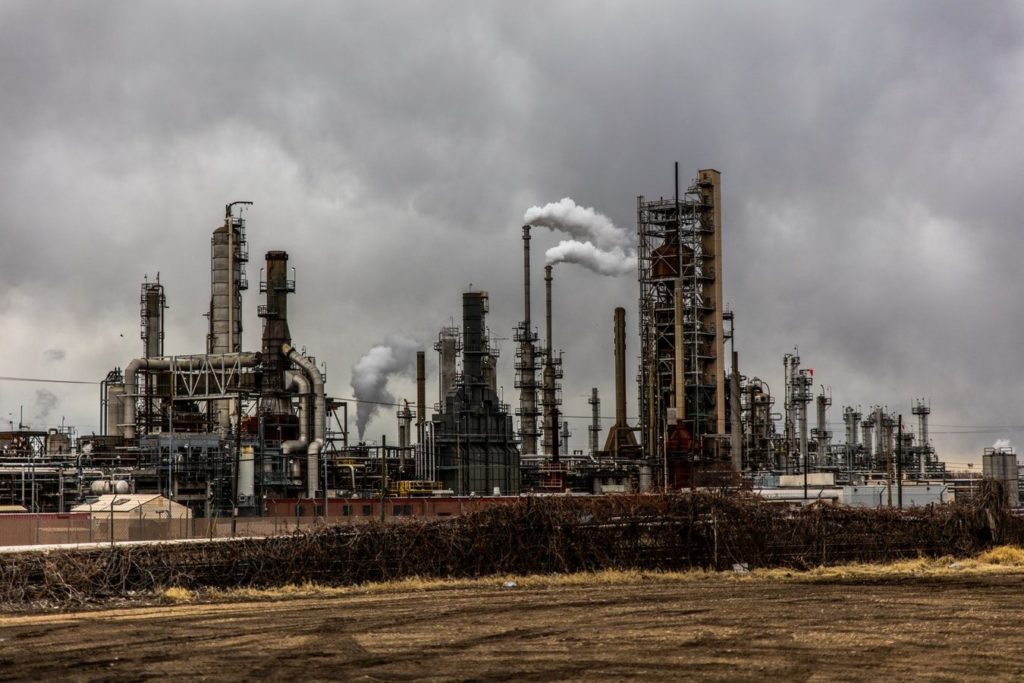
There is not enough carbon dioxide in the air to cost effectively make dry ice so instead carbon dioxide is extracted from factories as a waste product.
One of the major producers of carbon dioxide is manufacturing plants that make ammonia.
Ammonia is extremely important as it is used globally as a nitrogen fertilizer and allows us farmers to grow enough food for us all to eat. It has some other uses in laboratories and other applications as well.
Ammonia is made by combining nitrogen from the air with hydrogen atoms. The create pure hydrogen atoms methane is combined with steam to create carbon dioxide, carbon monoxide and hydrogen.
The Hydrogen is used to create ammonia.
The carbon monoxide goes through another process to be turned into carbon dioxide and then the carbon dioxide is funneled off to the next stage in the process. Below is a great video explaining the process:
2. CO2 Gas Is Purified Using an Absorbent
Carbon dioxide that is meant for food grade purposes is purified to make it safe to use with food.
The CO2 is run through a chamber that contains a CO2 absorbent. The CO2 is absorbed and the other gases and impurities are vented out and disposed off.
The absorbent is then heated to release the pure CO2 gas which is then captured in the next stage of the process.
PLEASE NOTE: Not all dry ice is “food grade” so some of it may not go through this process. You should NOT eat dry ice.
2. CO2 Is Cooled and Pressurized And Turned Into Liquid
Once captured the CO2 is cooled down and placed into large pressurized tanks for storage. It's the same processed used to make fire extinguishers only on a much larger scale.
As CO2 gas is pumped into these tanks the pressure increases and once the pressure is high enough the CO2 begins to turn into a liquid.
The tanks just need to be kept below 31ºC (87.8ºF) for the CO2 to remain in liquid form. Below you can see a phase diagram of carbon dioxide.
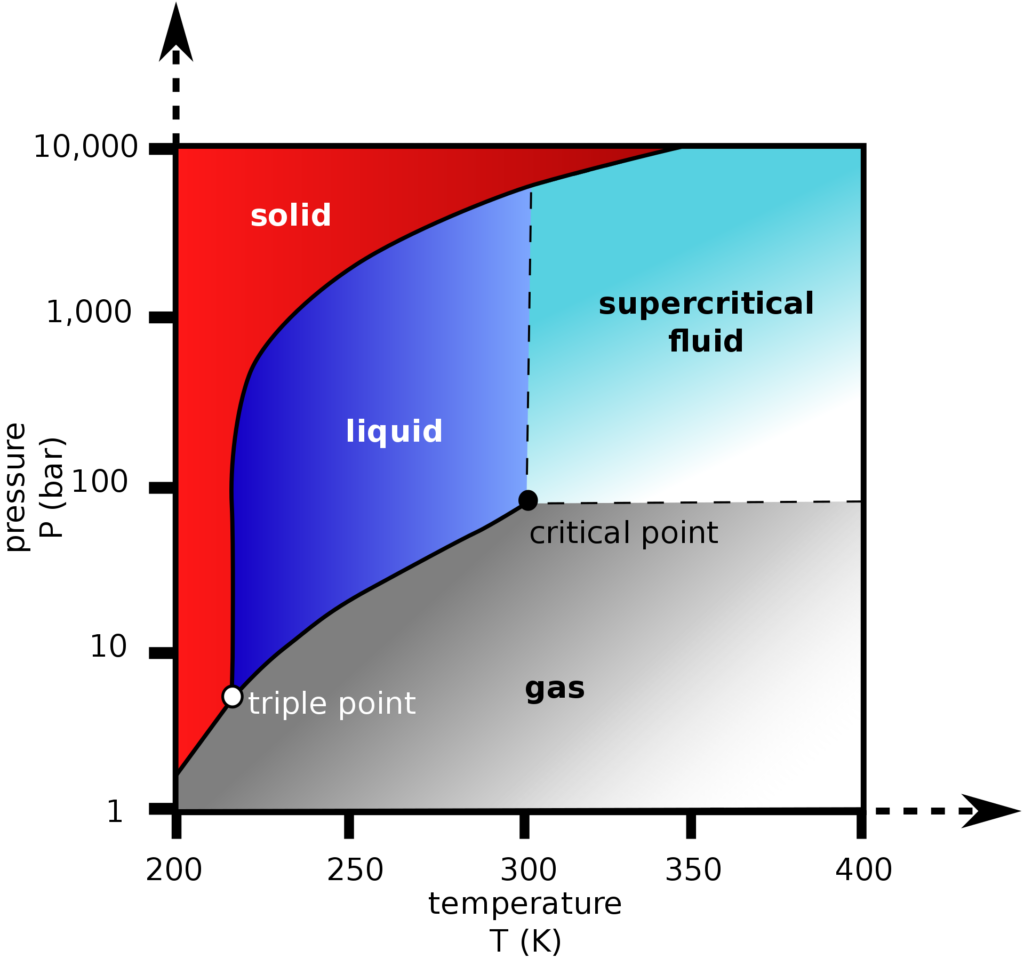
At normal atmospheric pressure carbon dioxide only exists as a gas but as pressure is increased it turns into a liquid.
This is exactly how fire extinguishers are made only on a much smaller scale. They are filled with CO2 until the pressure increases then when you release the CO2 from the extinguisher it immediately turns into a gas.
3. Liquid CO2 Is Transferred To Dry Ice Manufacturers
The large liquid CO2 tanks are then transported to the dry ice manufacturers and they will use these tanks to make dry ice.
Tank trucks will pumped the liquid CO2 directly into large storage tanks kept in the dry ice manufacturing plant.
These tanks need to be kept refrigerated so the CO2 stays in it's liquid state.
4. Liquid CO2 Is Depressurized and Turned into Snow
The next step actually makes the dry ice.
The liquid CO2 is pumped into a “dry ice press” which is kept at atmospheric pressure.
As the liquid CO2 moves from the highly pressurized tanks to the low pressure of the dry ice press a lot of it instantly turns from liquid to a gas.
Turning from a liquid into a gas requires energy (in the form of heat) and the CO2 get's this heat energy from the remaining CO2 liquid, quickly cooling it down dramatically and turning it into a solid that we know as dry ice.
This forms a dry ice snow which needs to be tightly packed together to make blocks of pellets.
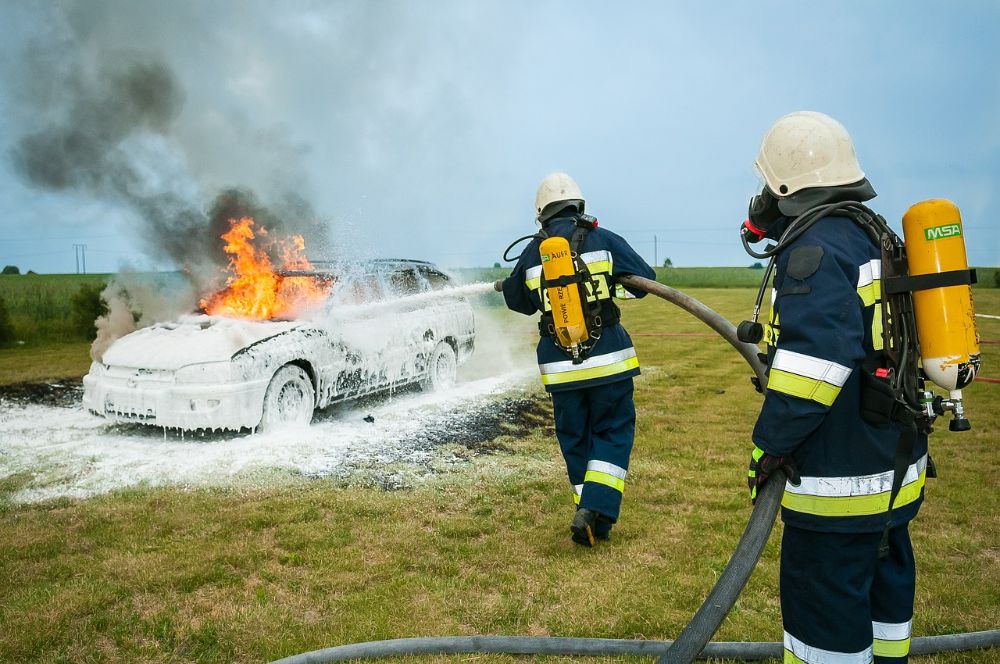
You see this same process at work when you use a fire extinguisher. As the CO2 liquid comes out of the extinguisher some of it turns to gas and some forms a dry ice snow which covers the fire you're trying to put out.
Only about half of the carbon dioxide gas actually freezes into dry ice and the rest is either recycled or lost.
5. CO2 Snow Is Compressed Into Blocks
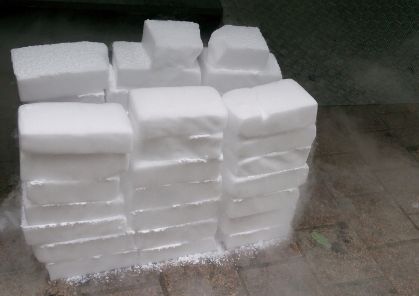
Lastly a press or pelletizer compresses the dry ice snow using a lot of force.
Just like how a garbage compactor presses everything together or how your hands press snow together to make a snowball.
Only these machines use a lot more force than your hand or a garbage compactor.
Once compacted you are left with dry ice blocks or pellets which can then be sold for commercial or domestic use.
6. Dry Ice Is Stored In Well Insulated Coolers and Sold
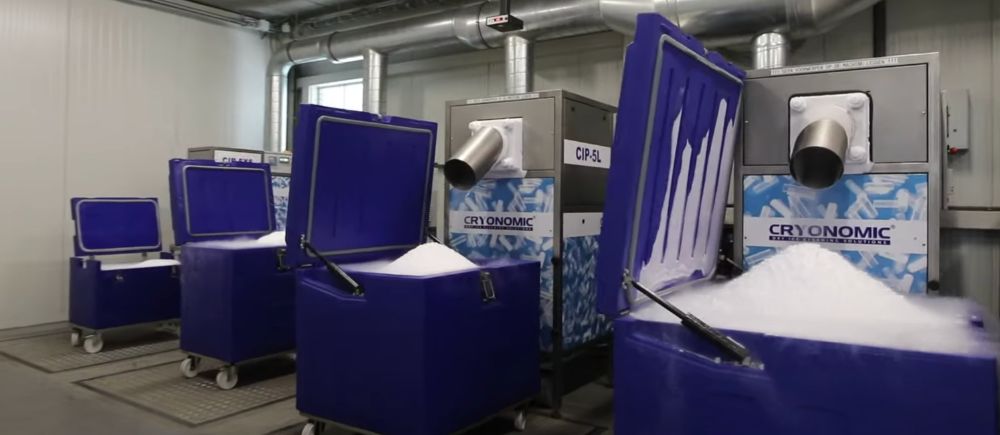
Once the dry ice is compacted it is then placed into well insulated coolers to minimize sublimation (turning from a solid into a gas).
Blocks are tightly packed together to minimize surface area and slow the sublimation process and then shipped off to labs, businesses and stores where they can be used.
Click here for more details on where to buy dry ice or click here for details on how much dry ice costs.
A lot of major stores sell dry ice and at great prices and dry ice can last 3+ days in a good cooler if you use it properly. Walmart has some of the cheapest dry ice and so does Kroger but in small quantities all stores are fairly close in price, it's only when you buy in larger quantities that you might want to go direct to dry ice manufacturers.
How To Make Dry Ice At Home
You can make dry ice at home using a fire extinguisher.
To make dry ice at home simply wrap the end of your fire extinguisher nozzle with a tea towel. Be sure to not have your hand too close to the nozzle as dry ice can burn your skin.
Release the fire extinguisher blowing carbon dioxide into and through the tea towel.
After a few seconds you'll have dry ice snow trapped on the inside of your tea towel. You can now take this out and compact it with your hands (make sure you have thick gloves on) to make more dense dry ice.
The longer you blow the fire extinguisher for the more dry ice you will have. You can then use this dry ice to make some dry ice fog or put it in drinks of cocktails to get 10-15 minutes of dry ice fog in your drinks.
Again, this isn't very efficient and is an expensive way to make dry ice. You're better off getting dry ice from your local store instead.


